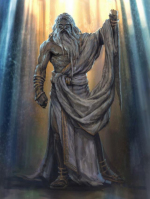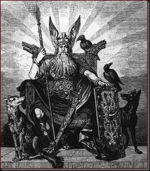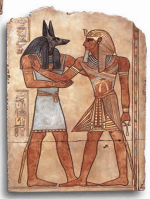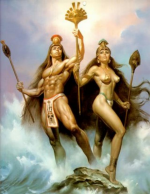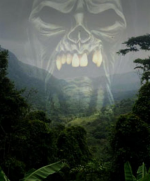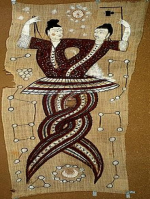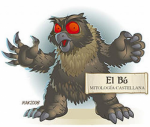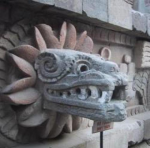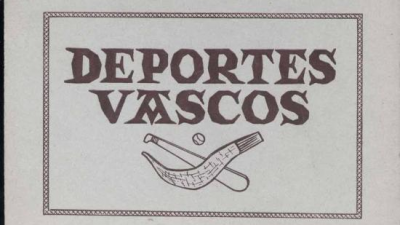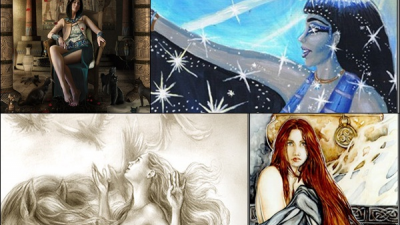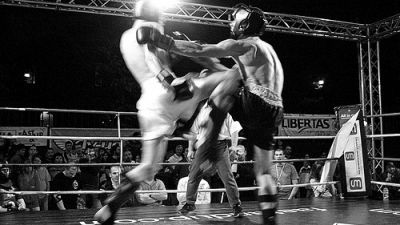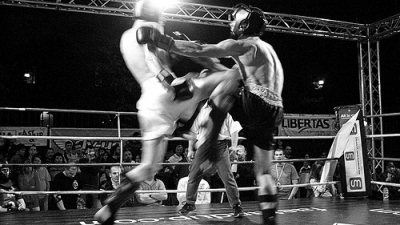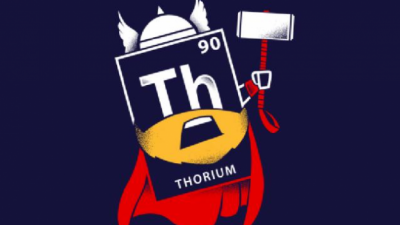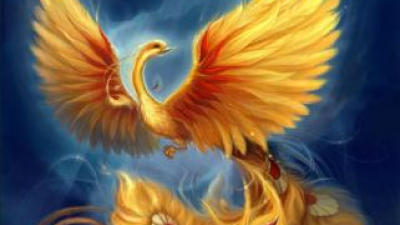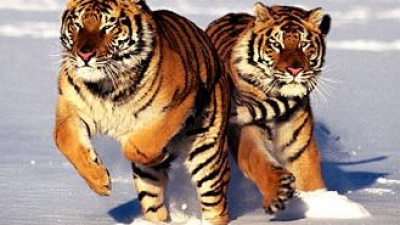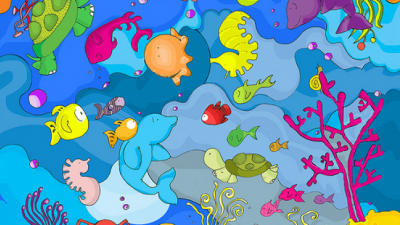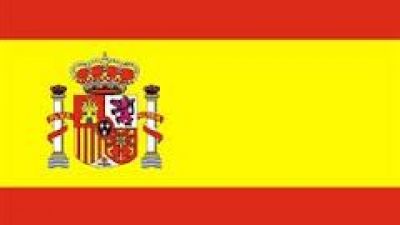The most interesting mythologies
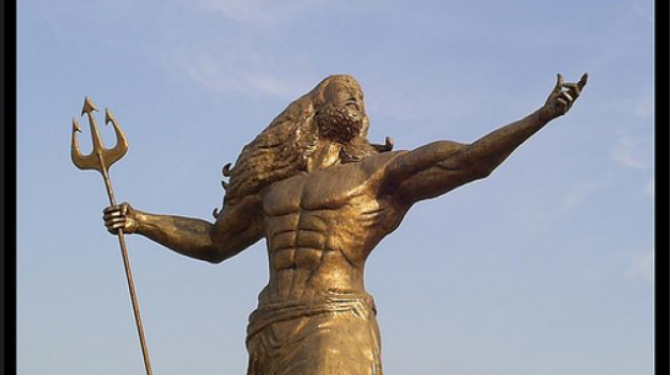
Source: listas.20minutos.es
Mythology is a set of relatively cohesive myths: stories that are part of a certain religion or culture. Discourses, narratives or cultural expressions of sacred origin are also called myth, and were later secularized and treated as discourses related to a culture, an era or a series of beliefs of an imaginary nature. Myths are tales based on tradition and legend created to explain the universe, the origin of the world, natural phenomena and anything for which there is no simple explanation. However, not all myths have to have this explanatory purpose. Likewise, most myths are related to a natural force or deity, but many are simply stories and legends that have been passed down orally from generation to generation. Mythologies have also served to inspire various movies, video games, books, and series, anime such as the famous knights of the zodiac among many others, but here I leave you, I do not know if the main ones, but if my favorites, surely many of you will know them, others do not choose. your favorites.
TOP 1:
GREEK MYTHOLOGY
Greek mythology is the set of myths and legends belonging to the ancient Greeks dealing with their gods and heroes, the nature of the world, and the origins and meaning of their own cults and ritual practices. They were part of the religion of Ancient Greece. Modern researchers turned to myths and studied them in an attempt to shed light on the religious and political institutions of ancient Greece and, in general, on the ancient Greek civilization, as well as to better understand the nature of the creation of the myths. [1] Greek mythology explicitly consists of an extensive collection of stories and implicitly in figurative arts, such as painted pottery and votive offerings. Greek myths explain the origins of the world and detail the lives and adventures of a wide variety of gods, heroes, and other mythological creatures. These stories were originally spread in an oral poetic tradition, although myths are currently known mainly thanks to Greek literature. The oldest known literary sources, the epic poems from the Iliad and the Odyssey, focus on the events surrounding the Trojan War. Two of Homer's almost contemporary poems, Hesiod, Theogony, and the Works and Days, contain stories about the genesis of the world, the succession of divine rulers and human times, and the origin of human tragedies and sacrificial customs. Myths were also preserved in the Homeric hymns, in fragments of epic poetry from the Trojan cycle, in lyric poems, in the works of the 5th century BC playwrights. C., in writings of the researchers and poets of the Hellenistic period and in texts from the time of the Roman Empire by authors such as Plutarch and Pausanias. The "origin myths" or "creation myths" represent an attempt to make the universe comprehensible in human terms and to explain the origin of the world. [21] The most widely accepted version at the time, although a philosophical account of the beginning of things, is the one collected by Hesiod in his Theogony. It begins with Chaos, a deep void. From this emerged Gea (Earth) and some other primordial divine beings: Eros (Love), the Abyss (Tartarus) and Erebus. [22] Without male help, Gea gave birth to Uranus (Heaven), who then fertilized her. From this union the Titans were born first (Ocean, Ceo, Crío, Hyperion, Jápeto, Tea, Rea, Temis, Mnemósine, Febe, Tetis and Crono), then the Cyclops with one eye and the Hecatonchires or Centimans. Chrono ("the youngest, twisted-minded, the most terrible of [Gea's] sons") [22] castrated his father and became the ruler of the gods with his sister and wife Rea as consort and the others Titans as his court. The theme of father-son conflict was repeated when Crono confronted his son, Zeus. Having betrayed his father, Crono feared that his offspring would do the same, so each time Rea gave birth to a son, he kidnapped and swallowed them. Rea hated him and tricked him into hiding Zeus and wrapping a stone in diapers, which Chrono swallowed. When Zeus grew up, he gave his father a drug that forced him to vomit up his brothers and the stone, which had remained in Chrono's stomach the entire time. Zeus then fought him for the throne of the gods. In the end, with the help of the Cyclops (whom he freed from Tartarus), Zeus and his brothers achieved victory, condemning Chrono and the Titans to prison in Tartarus. [23] Zeus suffered the same concern and, after it was prophesied that his first wife Metis would give birth to a god "greater than himself," he swallowed her. However, Metis was already pregnant with Athena and this saddened her until it sprang from her head, adult and dressed for war. This "rebirth" of Athena was used as an excuse to explain why he was not overthrown by the next generation of gods, while also explaining his presence. Cultural changes already in progress are likely to absorb Athena's ingrained local cult in Athens within the changing Olympic pantheon without conflict because it could not be overthrown. [Ancient Greek thought on poetry considered theogony as the prototypical poetic genre - the prototypical mythos - and attributed almost magical powers to it. Orpheus, the archetypal poet, was also the archetype of a theogony singer, used to calm seas and storms in Apollonius' Argonutics, and to stir the stony hearts of the gods of the underworld on their descent into Hades. When Hermes invents the lyre in the Homeric Hymn to Hermes, the first thing he does is sing the birth of the gods. [24] Hesiod's Theogony is not only the most complete preserved account of the gods, but also the most complete preserved account of the archaic function of the poets, with its long preliminary invocation of the Muses. Theogony was also the tem
TOP 2:
NORDIC MYTHOLOGY
Norse or Scandinavian mythology encompasses the religion, beliefs, and legends of Scandinavian peoples, including those who settled in Iceland, where the written sources of Norse mythology were gathered. It is the best preserved version of ancient Germanic mythology, common to all Germanic peoples, which also includes the closely related Anglo-Saxon mythology. Germanic mythology, in turn, has evolved from earlier Indo-European mythology. Norse mythology was a collection of beliefs and stories shared by the northern Germanic peoples. It is important to note that this mythology was not shared by the Nordic peoples of the Uralic ethnic group (Finns, Estonians and Lapps) nor the Baltic (Latvians), who had their own. It was not a revealed religion, for there was no truth given by the divine to mortals (although he has accounts of normal people learning the stories of the gods from or from a visit), and he did not have a holy book. This mythology was transmitted orally in the form of a long and regular poetry. This transmission continued during the Viking era, and our knowledge of it is primarily based on the Eddas and other medieval texts written during or after Christianization. In Scandinavian folklore, these beliefs lasted a long time, and in some rural areas some traditions have been upheld to this day. Others have recently been revived or reinvented, such as German neopaganism. Mythology has also remained an inspiration in literature as well as stage productions or movies. Most of this mythology was transmitted orally, and much was lost. However, some of it was captured and recorded by Christian scholars, particularly in the Eddas and Heimskringla of Snorri Sturluson, who believed that pre-Christian deities were men and women rather than demons. There is also the Gesta Danorum ("Danish History") of Saxo Grammaticus, where, however, the Norse gods are strongly Evemerized. The minor or prosaic Edda was written in the early 13th century by Snorri Sturluson, who was a leading poet, lagman, and Icelandic diplomat. It can be seen above all as a manual for aspiring poet. It contains prose explanations of traditional "kenningar", or compressed metaphors found in poetry. These prose accounts make the various accounts of the Norse gods systematically and coherently organized. The Poetic Edda (also known as "Greater Edda"), was put in writing some 50 years after the prosaic Edda. It contains 29 long poems, of which 11 deal with the Germanic deities, and the rest with legendary heroes such as Sigurd the Volsungo (Siegfried in the German version known as the Song of the Nibelungen). Although some scholars think that it was written after the other Edda, the language and poetic forms used in the stories make it presume that its origin dates back several centuries before its transcription. Alongside these sources, there are legends that survive in Scandinavian folklore. Some of these can be corroborated with legends that appear in other Germanic literatures, for example, the story told in the Battle of Anglo-Saxon Finnisburg, and many allusions to mythological tales in Déor. When various partial references and narratives survive, scholars can deduce the original legend. Additionally in Scandinavia there are hundreds of place names related to deities. A few runic inscriptions, such as on the Stele or Rök Stone and the Kvinneby amulet, make references to mythology. There are also various stone runes and images depicting scenes from Norse mythology, such as Thor's fishing journey, scenes from the Volsunga Saga, Odin and Sleipnir, Odin being devoured by Fenrir, and Hyrrokkin riding towards Baldr's funeral. In Denmark, a stone image depicts Loki with curly mustaches and stitched lips, and the British Gosforth cross shows several intriguing images. There are also smaller images, such as figurines depicting the god Odin (with one eye), Thor (with his hammer), and Frey (with his erect phallus).
TOP 3:
EGYPTIAN MYTHOLOGY
Egyptian mythology is the name of the set of beliefs held by the settlers of ancient Egypt, prior to the arrival of Christianity. Its practices were banned in the time of Justinian I, in the year 535. Its development and influence lasted more than three thousand years, varying these beliefs through time, therefore, an article or even a book can do no more than summarize the multitude of entities and themes of this complex belief system. Egyptian iconography is very different from Greek or Roman: in Egyptian mythology many deities are represented with the human body and head of another animal. The main divinities were organized into five different groups: The Ennead of Heliopolis "The souls of Thot": Atum, Shu, Tefnut, Nut, Geb, Isis, Osiris, Neftis and Seth; whose main god is Atum. The Hermopolis Ogdoad: Num, Nunet, Heh, Hehet, Kek, Keket, Amun and Amonet; whence the god Ra arose. The Elephantine Triad: Jnum-Satis-Anuket (where Jnum is the primordial god). The triad of Thebes: Amun-Mut-Jonsu (where the main god is Amun). Memphis's triad: Ptah-Sekhmet-Nefertum (where Ptah was the main god; it is unusual in that the gods were unrelated before it was formalized. As the leaders of the various groups gained and lost influence, the dominant beliefs they were transformed, combined and syncretized. Ra and Atum became Atum-Ra, with the characteristics of Ra as dominant, and Ra was later assimilated by Horus, as Ra-Horajti. After Ptah became Ptah- Seker was assimilated by Osiris, becoming Ptah-Seker-Osiris. The same thing happened with the goddesses: Hathor initially assimilated the characteristics of other goddesses, but ultimately was assimilated with Isis. The malefic gods were amalgamated in the same way, as Seth, who was originally a hero, assimilated all the characteristics of the evil gods, whom they later condemned for having been chosen as the protector god of the gob nomadic hyksos. During the time of Hellenic influence on Egypt, what lasted most vigorously was the triad: Osiris, Isis, and Horus; and his enemy Seth, as exemplified in the "Legend of Osiris and Isis". The triad had assimilated many of the previous cults and deities, and each god was worshiped in his preferred place of worship: Osiris in Abydos, Isis in Dendera, and Horus in Edfu. Even at this stage, the merger continued, with Osiris as an aspect of Horus (and vice versa), gradually heading towards monotheism. However, monotheism, or henotheism, had arisen previously, fleetingly, in the fourteenth century BC. C., when Ajenatón had tried to prioritize the cult of Aten, in the form of a solar disk, although it was later violently rejected by the clergy and the Egyptian people. According to the Royal Canon of Turin, various gods ruled Egypt: Ptah, Ra, Shu, Geb, Osiris, Seth, Thot, Maat and Horus; each for immense periods, then the Shemsu Hor reigned for 13,420 years, before the first dynasty of pharaohs emerged. Thus, Menes' predecessors occupied the Egyptian throne for 36,620 years.
TOP 4:
Inca mythology
Inca mythology as an important identity value for the pre-Columbian peoples was successful due to the political, commercial and military influence before the conquest of the territories to the South and North of Cuzco that the nascent empire later undertook. The peoples of the northern region of Peru and in present-day Ecuador where the imperialist expansion encountered military resistance, but not in the religious aspect, since the thought of the identity of the Quechua peoples in Peru and Bolivia and the Quichuas (Kychwas) in Ecuador, they share this spatial and religious perception that unites them by their most significant deity as the sun god Inti. Inca mythology was formed by a series of legends and myths of this ethnic group, which supported the pantheistic religion of the Inca Empire, centralized in Cusco. To their gods, the Inca people worshiped, as in other mythologies. Some names of gods were repeated or were called in the same way in different provinces of the Inca people. Later all these gods were unified and formed what is called the true Inca pantheon of divinities. What is applied by the Inca cosmogony in the field of beliefs must be considered as one of the most important instruments used in the process of the formation of its empire along with the economic, social and administrative transformations.
TOP 5:
Mythology of the Peruvian Amazon
The Mythology of the Peruvian Amazon is part of the magical universe of the Amazonian man of Peru, of popular culture; rich in myths and legends that are part of the tradition. In the afternoon, on the banks of the rivers or inside the communal houses. In villages, hamlets or native communities, when the man feels inspired, they are part of the topic of conversation. There, it is enough for someone to touch the subject for the elders, men or women, to tell about incredible wild beasts, ghosts, witchcraft, magic and enchantments that those present listen to with avidity and respect. But, like many of the riches of this blessed land, also the stories, myths and legends can disappear in time, if we do not preserve them for the future with the importance they have. That is why I publish these narrative riches with the main objective that our reality is better known and that future generations know how to keep intact, in the collective memory, the memories, myths and legends and so they can tell them to their descendants. The evil tunche is a Being that wanders through the dark nights of the jungle, as a soul in pain, some say that it is a bird, others that it is a sorcerer or a spirit of evil "a devil" who enjoys terrorizing people. But no one has seen it, and everyone recognizes it with fear when in the middle of the darkness it emits a penetrating whistle "end .... end ... end ..." that for moments is lost in the bush in the distance, but he whistles again on the roof of a house or on the river bank. Everything is so fast that people only manage to cross themselves or pray, because there is a belief that when he whistles insistently, around a town, heralds bad omens and when he does it about a house, illness or death. Making fun of the tunchi or tunche, insulting it, can cost the daring dearly, since it will make him enraged and then he will attack with more insistence, whistling ... whistling ... he will chase him so much that even the bravest will end up panicking, which can lead him to madness or death ...
TOP 6:
CHINESE MYTHOLOGY
Chinese mythology is the relatively cohesive set of fantastic tales of ancient Chinese culture. Many of its legends take place during the period of the three augustians and five emperors. Much of Chinese mythology is unique, although it shares a lot with Japan and Korea due to its influence on antiquity. Chinese Mythology is known thanks to texts that essentially date from the Chan-Wo dynasty. Not more than 2,000 years old, these writings can hardly be classified as recent. Furthermore, they were written by scholars who sometimes reinterpreted mythology according to their philosophical conceptions. In this way, they transformed the most important gods into virtuous sovereigns who reigned in ancient times. They also associated their gods with the five directions (that is, the four cardinal points and the center) according to a cosmology elaborated during early Antiquity. You can get an idea of what "original" Chinese mythology was like by comparing it to the stories of other peoples in the Far East. Extending this comparison throughout Eurasia, it can be seen that a large part of this mythology is of Indo-European origin. It therefore has totally surprising similarities with the Germanic, Greek or Slavic mythologies. That is due to the invasion of China by an Indo-European people, the Tocharians, more than 3,000 years ago. A unique feature of Chinese culture is the relatively late appearance in the literature of Creation myths, which do so after the founding of Confucianism, Taoism, and popular religions. The stories have several versions, sometimes contradictory to each other. For example, the creation of the first beings is attributed to Shangdi, Tian (heaven), Nüwa, Pangu or the Jade Emperor. Throughout the Far East and Oceania, there was a cosmological dualism opposing two principles, on the one hand light, sun and fire, on the other hand darkness, moon and water. Generally, a bird represented the first principle. In China, it was a crow. The solar bird is one of the privileged subjects of the Shang dynasty, the first Chinese dynasty whose existence is certified through archeology. A snake, like an aquatic animal, represented the second principle. Shun's mother, one of China's mythical sovereigns, belonged to the serpent clan, and her father belonged to the bird clan. Therefore, Shun was the result of the union of the two principles. This myth also illustrates the totemism of ancient Chinese society, according to which each clan had an animal ancestor, as well as exogamy, which required that spouses be from different clans. Xiè was Shang's ancestor and his mother was called Jiandi. One day, he went to bathe with his servants in the river of the dark hill. A black bird (probably a swallow or a crow) passed by carrying a multicolored egg in its beak. Let it fall. Jiandi took it and put it in her mouth, but inadvertently swallowed it. After this, she conceived Xie. In this story, it is a particular form of the union of the two cosmic principles, since this myth involves water and darkness on the one hand, and a bird on the other.
TOP 7:
CASTELLAN MYTHOLOGY
Castilian mythology is understood as the set of myths and legends typical of the historical territory of Castile. Castilian mythology, far from what is commonly thought, is not without legends, myths and magical beings. And despite the Christian sieve, certain pagan customs persist. We can find them in the popular mythology of many Castilian towns, in their oral tradition and in the study of many literary works in the Castilian language. Castilian mythology is characterized by nourishing itself from various origins. In the first place, by connecting with its mountain roots, which were carried by the foreigner repopulators in what would later become the kingdom of Castile. From the Celtiberian tradition underlying the Hispanic-Roman population. In addition, we can verify the rich Hispanic-tradition, sheltered in the Cantabrian cornice (heir to the Visigothic kingdom after its fall in 716), for example, providing characteristic iconographies to the history of Castile, which already appear in the "Poem of Fernán González": the horse and goshawk; or the reading of the signs of good or bad luck in the birds ("bird of bad omen"). In this way, it also feeds on the Mozarabs (Christians in Muslim dominions) who either escaped or liberated, shared knowledge and customs in Castilian lands. Many myths are common to other regions of the old Crown of Castile. In addition, due to the extension and diversity in the orography of the Castilian territory, there are varieties such as the same legend or mythological being having different interpretations or being named differently in different places. Even, Jesús Callejo points out in the Castilian territory the following mythological beings, in addition to the common goblins: Trentis (north of Burgos), mocking devils in La Rioja and Soria, Reñuberos in Palencia, Valladolid and León, clouds and regulars between Zamora and Valladolid , Gnomes in the Sierra de Francia, nubleros in the Central System and the Sierra de Alcaraz in Albacete, gnomes and mocking devils in the mountainous area of Cuenca and Guadalajara (it is easy to see how identical beings are repeated in identical geographical areas - mountains, mountains, plain ...), mining dwarves in the Montes de Toledo or supernatural monks in Ciudad Real. Furthermore, many of these myths or legends have traveled to Latin America with the Castilian colonists.
TOP 8:
MEXICAN MYTHOLOGY
Mexica mythology is an extension of the cultural complex. Before the Aztecs arrived in the Anahuac valley, there were already ancient cults and sun goddesses that they adopted in their quest to acquire a face. By assimilating them they also changed their own gods, trying to place them on the same level as the ancient gods of the Nahua pantheon. In this way, they raised their patron gods, Huitzilopochtli and Coatlicue, to the level of the ancient creative deities, such as Tláloc, Quetzalcóatl and Tezcatlipoca. That said, there is a dominant cult over the other Aztec gods, that of their Sun god, Huitzilopochtli. The Aztecs considered themselves as the people chosen by the Sun, in charge of guaranteeing their journey through the sky, feeding it. This sentiment was reinforced by the social and religious reform of Tlacaélel under the kingdom of the emperors Itzcóatl, Moctezuma I and Axayácatl in the middle of the 15th century. The myth of the creation of the Aztec world expands this idea. The pre-Hispanic religions were formed through a slow evolution and assimilation of the pre-Hispanic gods, they are not so much beings of unlimited power, but often incarnations of the forces of nature, with human personality, for them many scholars prefer to translate the pre-Hispanic concept of "Téotl" as lord, and not as god. The Nahua or tlahtimin sages tried to give a little order to this multitude of gods, thus, we have first of all the creator gods, or Ipalnemohuani, this is a Nahua word that means "one by whom one lives" and since in Nahuatl there is no plural except for the names of things, there has been much speculation about a possible monotheistic tendency of the Aztecs. Although this interpretation may be originated by the western monotheistic influence by not evaluating the importance in the Nahuatl culture of the concept of creative duality. The creator gods were in the first place, Ometéotl (Ome-two Teotl-Deity) the principle of the creative duality that in turn engendered in itself as origin and effect Ometecutli (Ome-Two Tecutli-Lord) male element of origin, and Omecihuatl (Ome-dos Cihuatl-Señora) feminine element of origin. From them emerged 4 main guiding elements: Tezcatlipoca Lord of the black mirror and Quetzalcóatl Feathered Serpent, creators of the world, Tláloc Lord of the water and Ehécatl Lord of the wind, providers of rain and life. Other names that were given to these gods are Tloque Nahuaque ("The inventor of himself" or "The lord of the near and together"). Most surviving Nahuatl poetry uses these names to refer to the creator gods.

